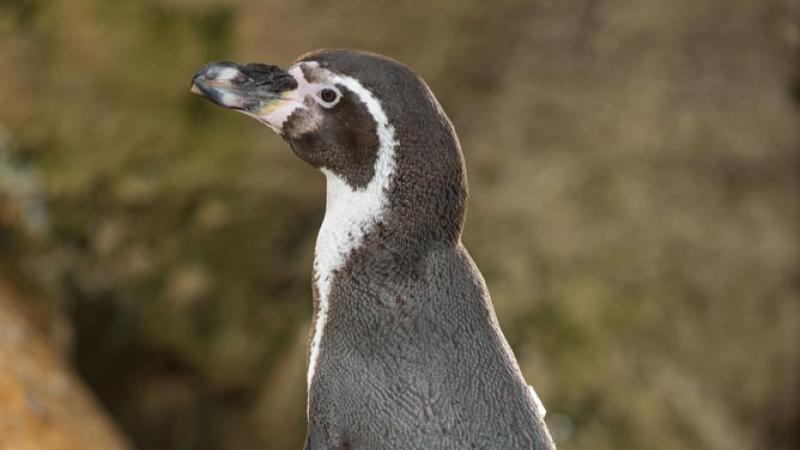Penguins waddle over to new digs at zoo polar bear habitat

Zoo's Humboldt colony makes temporary move as repairs are made to Penguinarium
Humboldt penguins, native to the South American coastline off of Chile and Peru, do not migrate like some of their seabird cousins. But don't tell that to the 25 Humboldt penguins who call the Oregon Zoo home.
This waddle of waddlers was on the move yesterday, marching over to the zoo's polar bear habitat to take up temporary residence as repairs are made to their Penguinarium. Guests can see the penguins enjoying their short-term living quarters through the end of the month.
"This doesn't just give us the chance make repairs to the Penguinarium without disrupting the colony," said Travis Koons, who oversees birds at the zoo. "It also gives the penguins the chance to explore a new habitat."
The polar bear habitat features 50,000 gallons of deep water for swimming and plenty rocks for diving. And most important for the 9-pound penguins, there are no polar bears in sight — the habitat is currently empty while the zoo prepares for construction of Polar Passage, a new habitat set to open in 2020.
The Penguinarium's gulls, terns and penguin chicks will also move during repairs, but they will not be visible in the polar bear habitat.
In 2012, the zoo completed a much-needed upgrade of the Penguinarium's water-filtration system, one of many improvements funded by the community-supported 2008 zoo bond measure aimed at protecting animal health and safety while conserving and recycling water. The upgrade saves millions of gallons each year.
More News

Rescued cougar cubs are venturing out
A pair of orphaned cougar cubs, rescued and brought to the zoo by Washington Department of Fish and Wildlife staff in November, have begun exploring their outdoor habitat.April 17, 2025

Zoo seeks pika watchers for summer season
The Oregon Zoo is recruiting volunteers for Cascades Pika Watch.April 15, 2025

Zoo convenes action for imperiled elephants
Sabah government representatives joined conservation NGOs, local communities, palm oil producers, and tourism operators this week in the fight to save the world’s smallest elephants from extinction.April 11, 2025

